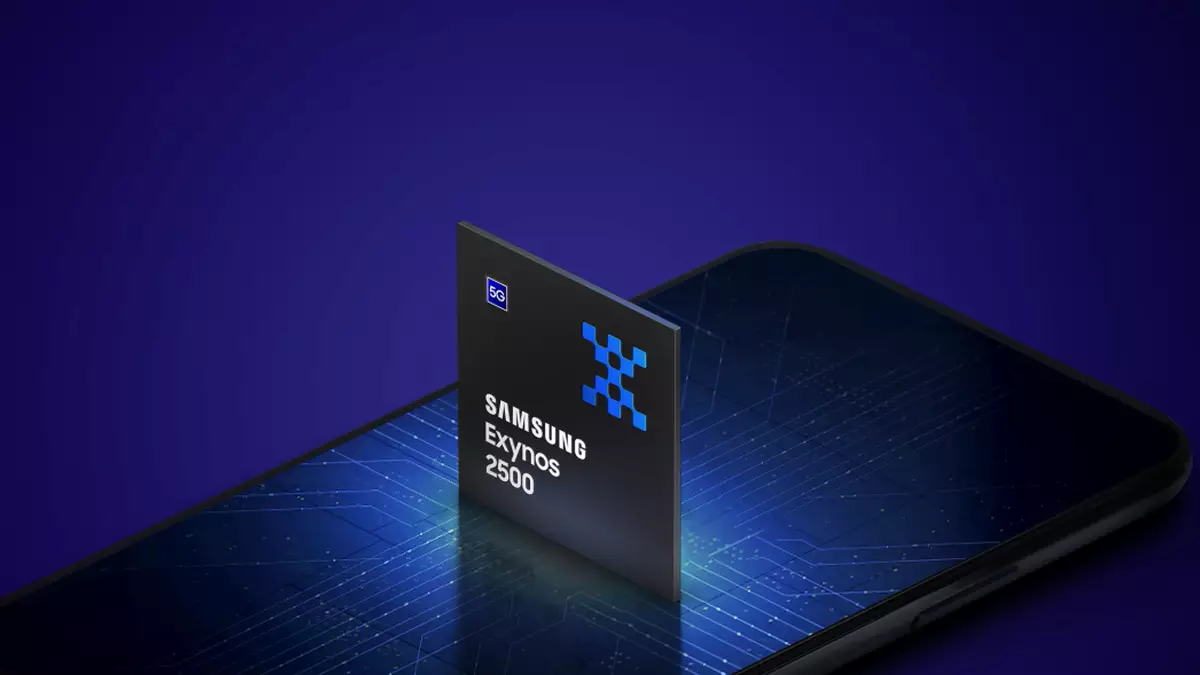Samsung has taken a bold step into the future of mobile technology with its recent unveiling of the Exynos 2500 chipset, marking a significant evolution in its engineering. As the company’s debut product utilizing their cutting-edge 3nm process technology, the Exynos 2500 does not merely aim to keep pace with competitors like Apple and Qualcomm; it sets the stage for a new standard in mobile computing. The performance gains are striking, boasting a 15 percent increase in CPU efficiency and a staggering 39 percent improvement in AI processing capabilities over its predecessor, the Exynos 2400. In a landscape where every millisecond counts and AI integration continues to rise, these enhancements could be the differentiator that Samsung needs to reclaim its once unassailable position in the smartphone market.
Connecting Beyond Conventional Boundaries
One of the most groundbreaking features integrated into the Exynos 2500 is its compatibility with Low Earth Orbit (LEO) satellite communications. In an age where connectivity is paramount, this addition opens up a revolutionary avenue for emergency communications, especially in areas where cellular signals fall short. The ability to send texts and make calls directly to satellites transforms our understanding of network reliance. By establishing better communication avenues in remote or disaster-stricken regions, Samsung is not only enhancing user experience but also embracing a socially responsible approach to technology.
Thermal Efficiency Meets Raw Power
Digging deeper into its technological advancements, the Exynos 2500 employs a tri-cluster CPU architecture, specifically designed for optimized performance and heat management. The combination of fan-out wafer-level packaging (FOWLP) with Gate All Around (GAA) technology illustrates Samsung’s commitment to efficiency. By improving thermal dissipation, users can expect their devices to operate under demanding conditions without overheating—a notable pain point in many high-performance smartphones. With an architecture consisting of varied core configurations, the Exynos 2500 aligns raw power and resource management in a way that users will appreciate but often overlook.
Visual and Computational Brilliance
The Xclipse 950 GPU is another star of the Exynos 2500 show, showcasing AMD’s RDNA 3 architecture. Samsung claims an impressive 28 percent boost in frame rates for gaming, incorporating hardware-accelerated ray tracing—features that are becoming increasingly essential for high-end mobile gaming. Moreover, with support for 8K video recording at 30 frames per second and the ability to handle an astonishing 320-megapixel camera sensor, the Exynos 2500 is clearly engineered for a visually immersive experience. The implications for media consumption and smartphone photography are monumental—users now have access to cinema-quality recording and unprecedented image detail, which could elevate content creation on mobile platforms.
Empowering Convenience Through Connectivity
The connectivity suite that accompanies the Exynos 2500 speaks volumes about Samsung’s intent to future-proof its devices. With support for 5G speeds reaching up to 12.1 Gbps, alongside Wi-Fi 7, Bluetooth 5.4, and NFC capabilities, Samsung is not just meeting current standards but anticipating future needs and trends. These features are particularly significant in the increasingly interconnected world we inhabit, where the snappiness of an internet connection can dictate user satisfaction and productivity. Furthermore, the incorporation of USB 3.2 Type-C ports additionally functions as a nod to modern universal standards, enhancing device interoperability.
While it’s easy to focus solely on the specs when discussing the Exynos 2500, it’s essential to appreciate that they are an integral part of a broader narrative about how Samsung is positioning itself as a forward-thinking tech leader. This chipset represents a far-reaching vision not just for handheld devices, but for the broader possibilities of connectivity and artificial intelligence. By combining raw power with responsible innovation, Samsung is not just launching a product but potentially redefining what users can expect from mobile technology. This level of ambition must be recognized and lauded, as it reiterates that the future of technology lies in how it shapes and enriches human life.


Leave a Reply